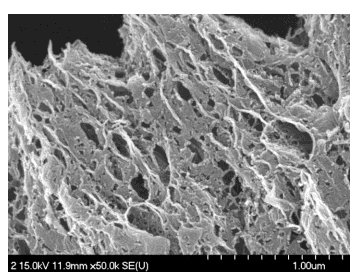Automakers are always searching for ways to improve the efficiency, and therefore the range, of electric vehicles. One way to do this is to regenerate and reuse the energy that would normally be wasted when the brakes slow a vehicle down.
There is a problem doing this with conventional batteries, however. Braking occurs over timescales measured in seconds but that’s much too fast for batteries which generally take many hours to charge. So car makers have to find other ways to store this energy.
One of the more promising is to use supercapacitors because they can charge quickly and then discharge the energy just as fast.
Researchers at the Gwangju Institute of Science and Technology in Korea say they have developed a high-performance graphene supercapacitors that stores almost as much energy as a lithium-ion battery, can charge and discharge in seconds and maintain all this over many tens of thousands of charging cycles.
The Koreans say they have perfected a highly porous form of graphene that has a huge internal surface area. This is created by reducing graphene oxide particles with hydrazine in water agitated with ultrasound.
The graphene powder is then packed into a coin-shaped cell, and dried at 140 degrees C and at a pressure of 300/kg/cm for five hours.
The resulting graphene electrode is highly porous. A single gram has a surface area bigger than a basketball court. That’s important because it allows the electrode to accomodate much more electrolyte (an ionic liquid called EBIMF 1 M). And this ultimately determines the amount of charge the supercapacitor can hold.
Santhakumar Kannappan at the Gwangju Institute of Science and Technology have measured the performance of their supercapacitor at a specific capacitance of over 150 Farrads per gram that can store energy at a density of more than 64 Watt hours per kilogram at a current density of 5 Amps per gram.
That’s almost comparable with lithium-ion batteries which have an energy density of between 100 and 200 Watt hours per kilogram.
These supercapacitors have other advantages too. Kannappan and co say they can fully charge them in just 16 seconds and have repeated this some ten thousand times without a significant reduction in capacitance. “These values are the highest so far reported in the literature,” they say.
